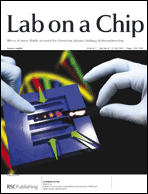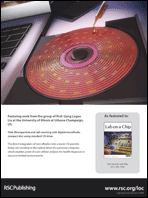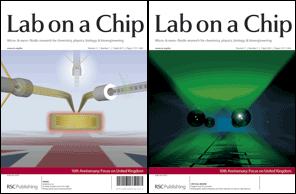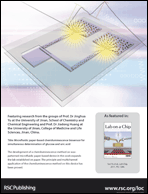So you’ve designed this fantastic little lab-on-a-chip device that will revolutionise disease/virus/cancer detection or discover fantastic new drugs, but you can’t get your sample into all the complicated channels or bubbles are ruining your flow. Sound familiar?

Well now Paul Vulto (Albert-Ludwigs-Universität Freiburg) and colleagues have developed a novel technique for priming microfluidic devices that could solve all these problems. By using patterned ridges in their devices they are able to guide the liquid–air interfaceto fill complicated geometries – by forcing it to align with the ridge. This allows them to fill complex microfluidic chambers and channels, independant of their shape, simply by the carefully patterning of these ridges. The team have aptly coined the term ‘phaseguides‘ to descibe their invention and hope that it ‘will prove a leap forward towards more simple, flexible and reliable microfluidic systems’.
This figure demonstrates the impressive use of phaseguides by the filling of a butterfly shaped chamber. Inserts (a and b) demonstrate that when filling without a phaseguide pattern the liquid spreads radially leaving the structure largely un-filled. Inserts (c–f) demonstrate that with phaseguides (visualized by dashed lines in (c)), the structure can be completely filled with liquid.
This paper comes highly recommended by our expert reviewers and is free to access for 6 weeks – why not download it today!
Phaseguides: a paradigm shift in microfluidic priming and emptying
Paul Vulto, Susann Podszun, Philipp Meyer, Carsten Hermann, Andreas Manz and Gerald A. Urban
Lab Chip, 2011, 11, 1596-1602
DOI: 10.1039/C0LC00643B











 Featured on the
Featured on the  On the
On the Finally, the
Finally, the  As part of our
As part of our 

 LOC is pleased to bring you the next instalment in our 10th anniversary
LOC is pleased to bring you the next instalment in our 10th anniversary 